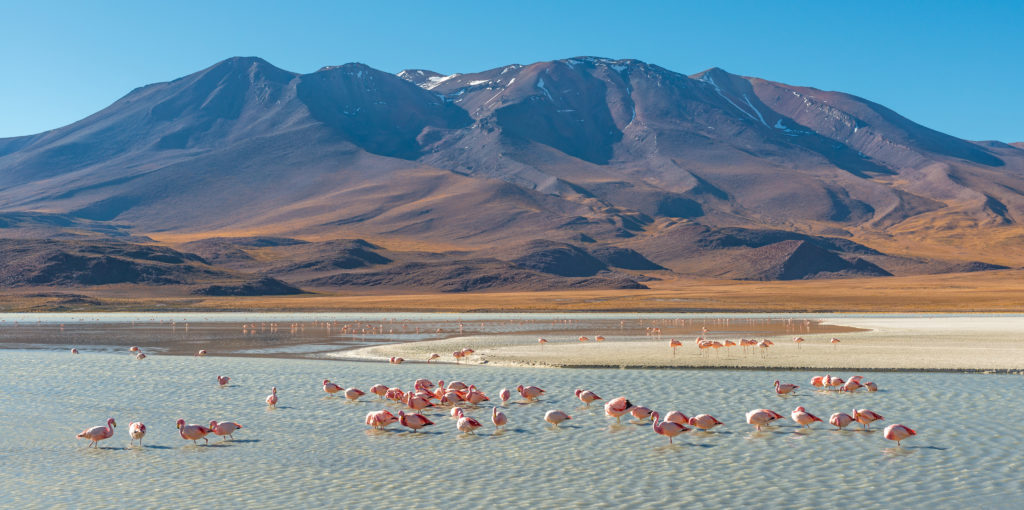Protecting Our Feathered Friends
Picture a desert in your mind. What did you see?
Often, the word “desert” conjures images of vast stretches of sand dunes or towering cacti — not flamingos, which can be found in one of the driest places on Earth: The Atacama Desert.
This arid region in South A to many high-altitude salt flats, including the Salar de Atacama in northern Chile, which sits at 7,000 feet above sea level and, at 1,200 square miles, is the 3rd largest salt flat in the world. This salt flat provides important feeding and nesting grounds for 3 species of flamingos, the Chilean, Andean, and James’s flamingos. But small crustaceans — a favorite flamingo dish — are not the only resource found in the Salar de Atacama; it is also a major source of lithium, accounting for nearly 40% of lithium production worldwide.
Batteries for smartphones, computers, and electric cars all contain lithium, but current mining practices for the metal threaten flamingo habitat.
Reid Park Zoo has partnered with the Zoo Conservation Outreach Group to lead the Andean Highland Flamingo SAFE program. The SAFE program (short for Saving Animals From Extinction) was established in 2015 by the Association of Zoos and Aquariums (known as AZA) with the goal “to combine the power of zoo and aquarium visitors with the resources and collective expertise of AZA members and partners to save animals from extinction,” according to the AZA SAFE 2018 annual report.
AZA-accredited zoos and aquariums use SAFE programs to combine strategic conservation in the wild and public engagement to help save some of the world’s most vulnerable species. Little is known about the ecology of the Andean highland flamingos, so the first step in protecting them is to learn more about their population health and migration patterns using solar GPS satellite transmitters. The information gathered from the flamingos fitted with the transmitters will be used to develop conservation and recovery plans for the three Andean highland flamingo species.
We will then put the plans into action with the help of other conservation partners and zoos to maximize our conservation impact for these imperiled birds.
What can you do?
We can help protect the Andean highland flamingo species by doing our part to protect their unique habitat. The best way to protect flamingos is to only purchase new electronics when we really need to. While the batteries in our phones and other electronics can be recycled, not all of the battery’s components, such as lithium, are currently being recycled.
By choosing to reduce the number of new gadgets we buy we can directly help these desert-dwelling flamingos. It is our responsibility to make sure we are using resources wisely to protect wild animals and wild places — and, in this case, this means reducing the amount of resources we use. Reducing resource use at Reid Park Zoo is important as a conservation organization so we have developed a Zoo Green Team comprised of staff members representing all Zoo departments. The Green Team evaluates resource use at the Zoo and implements ways for the Zoo to be less reliant on the Earth’s resources. Stay tuned for updates from the Zoo’s Green Team!

